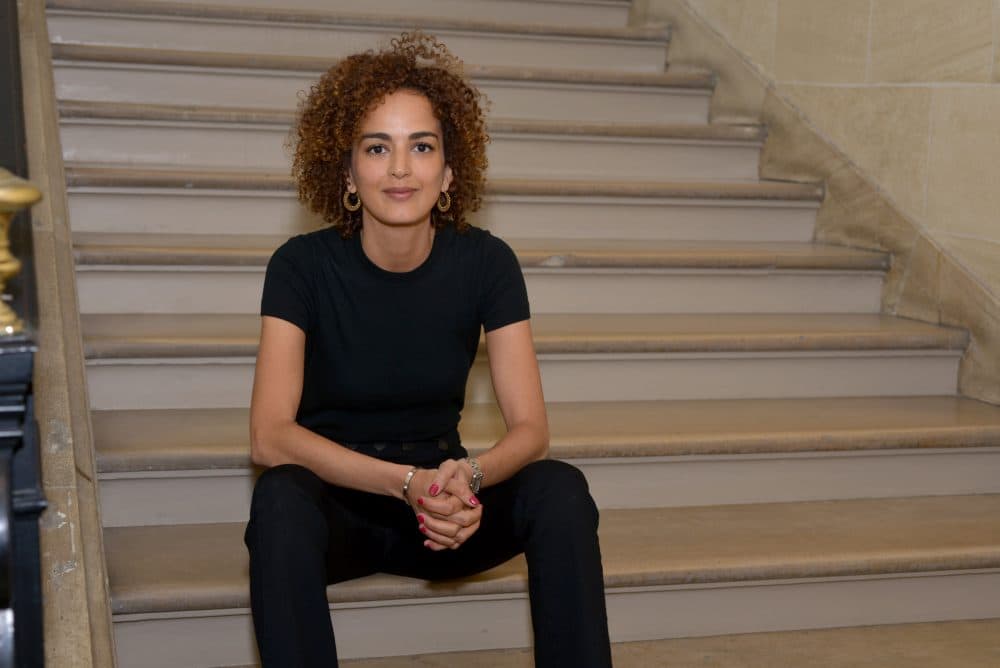Advertisement
Review
'The Perfect Nanny' Doesn't Hide From The Depths Of Darkness

While reading about the descent into madness of eponymous character in “The Perfect Nanny,” I was reminded of a poem by Charles Bukowski, where he writes that mental breakdowns result not after a single blow or setback, but by accretion:
it’s not the large things that
send a man to the
madhouse. death he’s ready for, or
murder, incest, robbery, fire, flood …
no, it’s the continuing series of small tragedies
that send a man to the
madhouse …
not the death of his love
but a shoelace that snaps
with no time left ...
The tumble into mental illness, to the outside world, can sometimes look like no change at all. Mental collapse doesn’t announce itself like a bad cough or a constant limp. Sometimes it sneaks up and nestles deep within before anyone else takes notice.
And so it is in Leila Slimani’s American debut. In its French incarnation, “Chanson Douce,” the novel earned the Moroccan-born Parisian the Goncourt Prize and made her a star in her homeland. I doubt the same reaction will take hold here in the States, unless Oprah falls in love with the book. “The Perfect Nanny” is, quite simply enough, a simple story, well told (and Sam Taylor's translation maintains the author's directness). Slimani’s characters are well drawn, and she laces her narrative with acute observations, and seems intent to let no one off the hook for the terrible act at the heart of the story.

That act is drawn from real life; Slimani had read of a New York nanny, Yoselyn Ortega, who in 2012 killed two of the children in her care before trying to take her own life. This gives rise to the author’s stunner of an opening: “The baby is dead,” Slimani writes. Shocking words made even more immediate in the present tense. Throughout the novel, Slimani flits seamlessly between tenses, and plays with the chronology of her tale. Her matter-of-fact tone adds a layer of creepiness to many of the novel’s 228 pages.
Since we know the ending from page one, the only questions are how and why we get there.
“The Perfect Nanny” transplants the story to Paris, where Myriam and Paul Massé live with their two children in a smallish apartment in the city’s upscale 10th Arrondissement. She’s a lawyer sidelined as a stay-at-home mom, he’s a record producer looking for a big break. Once the garish, but wonderfully rendered, opening scene is dispensed with, Slimani takes us back to the day the couple decides to hire a nanny.
Advertisement
They settle on a 40-something widow named Louise whose own 19-year-old daughter, Stéphanie, was a disappointment and has left home. The new nanny is as flawless as the novel’s title suggests. Childcare settled, Myriam goes back to lawyering, and it would seem the family is set to realize all its bourgeois dreams.
Slimani begins soon after planting seeds that will lead logically to the horrible dénouement. Paul and Myriam begin considering Louise not just a great find, but as their property. Myriam tries hard not to see her children as impediments to her career and happiness, gladly letting the nanny be the "she wolf" that cares for and protects them. Meanwhile, Louise slowly begins to demonstrate some worrisome traits: The stories she reads to the children are full of, not sugar plum fairies, but tragedy; she has a slight, if undeveloped, taste for S&M; and she becomes possessive of the children so much so that when she’s alone, she feels lost. More than anything, Louise wants to belong.
“Solitude,” Slimani writes, “was like a vast hole into which Louise watched herself sink. Solitude, which stuck to her flesh, to her clothes, began to model her features, making her move like a little old lady.”
The writing is knowing and the descriptions of Louise’s long slow mental collapse feels scarily real. This is the book’s greatest strength, the nanny's sad trajectory comprises the only real dramatic movement in the novel.
At the outset, Louise’s unfathomable crime recalled for me the character of Meursault in Camus’ “The Stranger,” whose motivation for murdering another man remains somewhat mysterious. Slimani seems eager to lead us down this path, invoking the same existentialist leanings that many associated with Camus’ novel. For instance, she seems to be channeling Sartre when she writes of Myriam’s feelings: “We will, all of us, only be happy, she thinks, when we don’t need one another anymore. When we can lie a life of our own, a life that belongs to us, that has nothing to do with anyone else. When we are free.” Also, it’s probably no accident that Slimani’s opening line echoes that of “The Stranger”: “Mamam died today.”
Yet Slimani tracks in the opposite direction as Camus, not casting his protagonist as detached and unknowable, but instead peeling away the layers of Louise’s psyche. Three-fourth's the way into the novel, the nanny’s breakdown becomes physical, and the mental aspects begin piling up page by page, as she starts hearing voices and grows emotionally cold enough to eventually commit murder. “Her heart has grown hard. The years have covered it in a thick, cold rind, and she can barely hear it beating. Nothing moves her anymore.”
Bukowski’s shoelace, for Louise, is when her plan fails to entice Paul and Myriam to have a third child. It’s clear that in the aging of the couple’s children the nanny unmistakably sees the family’s reliance on her dissipating, robbing her of her capital and her life’s meaning. She stops this sad cycle the only way she knows how. We, the readers, understand Louise, and recognize in our own lives that dividing line of sanity, of which we must stay on the right side of.
Slimani gives us much to think about along the way; issues that are present today in society: immigration, class, women in the workplace, motherhood, the dark side of capitalism and the ways it turns parents into nervous workaholics and casts others into underappreciated servitude. In an interview in The New Yorker, Slimani comes across as an artist doomed to find the dark side in everything — sex (as in her first novel, “In the Ogre’s Garden”), parenting and even writing itself. But that doom may be her great gift: In exploring it, she finds her métier. She wants to look deep into the shadows without flinching, knowing that only this will free us from our fears. Or, at the very least, allow us to live with them.
